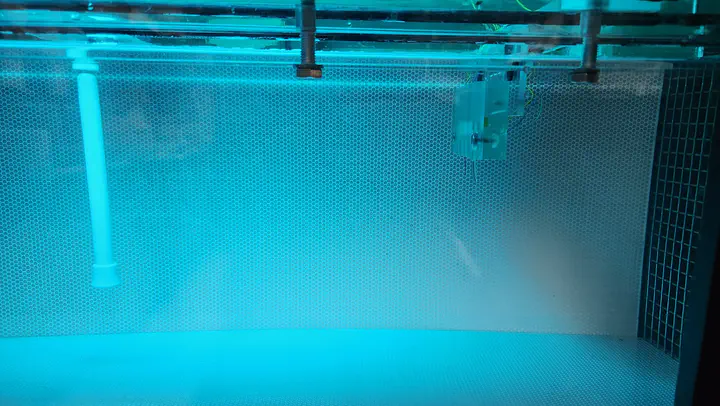Artificial Neuromast: Mimicking Nature for Underwater Energy Capture

Abstract
Hydropower stands as one of the most robust and geographically diverse sources of clean energy available. This study explores capturing the kinetic energy of an underwater environment by utilizing the inherent mechanoelectrical transduction (MET) capabilities of two distinct electroactive polymer (EAP) materials - ionic polymer-metal composites (IPMCs) and electroactive polymer gels (EPG). Inspired by the fish sensory organ known as the lateral line, an artificial superficial neuromast is developed, wherein the IPMC serves as a sensory hair cell enclosed within an EPG, mimicking the gelatinous cupula. The system is designed to respond to various hydrodynamic stimuli, inducing bending and compressive strain, leveraging the unique MET behavior of both materials. To evaluate the energy harvesting potential of this device, the artificial neuromast structure was affixed to an underwater platform within a Brett-type flume, where it was then stimulated by vortices induced by fixed bluff body. Variation in flow speed was implemented to assess the artificial neuromast’s responsiveness and its correlation to energy harvesting efficiency. By mimicking nature’s sensory mechanisms, the developed artificial neuromast offers a passive, scalable, and environmentally friendly means of energy harvesting within an underwater environment.